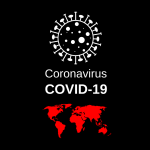With COVID-19’s “public health emergency” barely behind us, lawyers and policymakers are taking advantage of public sensitivity and planning for the next plague. How good their solutions are remains to be seen, but novel suggestions, and attention to new technology and historical practices, are few and far between.
Harm Reduction
Fast fashion refers to quickly designed clothing, easily produced from low-cost (cheap) materials and offered in trendy stores. Zara might be considered a fast fashion’s model. But what becomes of those no longer desirable clothes when the trend changes and the fashion shifts?
For many complex medical devices such as endoscopes, sterilizing with ethylene oxide is the only method that does the job without damaging the device during the process. Approximately 50% of all sterile medical devices in the U.S. make use of ethylene oxide. The EPA’s ethylene oxide risk assessment demonstrates what happens when faulty data and bad modeling is used as the basis of regulatory policy.
There's much discussion about banning gas stove tops because they emit nitrogen dioxide (NO2). Claims are also casually made about these burners with little scientific support about the harmful effects of carbon monoxide, carbon dioxide, and propane/natural gas emissions. Here are some obvious falsehoods and hidden biases in gas stove−childhood asthma research.
Even as the Surgeon General bemoans the dangers of social media to young people, several states are enacting laws allowing those 14 and over to work without permits, reversing child labor laws enacted almost a century ago. How did we get to the point of curtailing the protection of our most vulnerable segment of the population?
Let us consider Nature's remaining proposals to reclaim and reset the Biosphere and aerosol pollution. The authors challenged us to read their proposals and then discuss them. In the spirit of that challenge, I have let them do the talking (to be found in the quotes). But I do want to share a few final thoughts.
It's finally time to consider Safe and Just Earth System Boundaries proposals to reclaim and reset Earth Systems Boundaries. First up, the three most significant (at least in my view): climate, water, and nutrients. The authors of the paper in Nature challenged us to read their proposals and then discuss them. In the spirit of that challenge, I will let them do the talking.
In Part I, I presented a precis of the methodology the authors of Nature’s Earth System Boundaries had for the “… multiple levels of likelihoods to reflect underlying scientific uncertainties and variabilities.” As their findings “are meant as a transparent proposal for further debate” let’s now consider and debate the more contentious methodology underlying their proposed action – justice.
“Humans are taking colossal risks with the future of civilization and everything that lives on Earth.” So begins a report in Nature attempting to quantify Safe and Just Earth boundaries. The findings “are meant as a transparent proposal for further debate and refinement by scholars and wider society.” I took them at their word; let’s consider and then debate their proposals.
When we turn on the tap, we all expect clean and safe drinking water. Threats to the cybersecurity of public drinking water systems are critical, but often overlooked, issues facing our country. The EPA is faced with the challenge of how to regulate these emerging threats.
The Sixth Amendment states, "In all criminal prosecutions, the accused shall enjoy the right to a speedy and public trial….” In 2019, felony charges required a median of 424 days “to reach some final resolution.” Fourteen months in pretrial custody is not speedy. Bail “reform” seeks to end cash bail for certain crimes in the hopes of reducing pretrial jail populations. A new study tries to get past the sound bites of the media.
The EPA’s Integrated Risk Information System (IRIS) was founded in 1985 to assure scientific integrity and present intra-Agency consensus on health effects information on environmental chemicals. It is an excellent example of how a government agency can misuse a well-intentioned idea to meet a political agenda resulting in flawed public policy decisions with significant implications.











